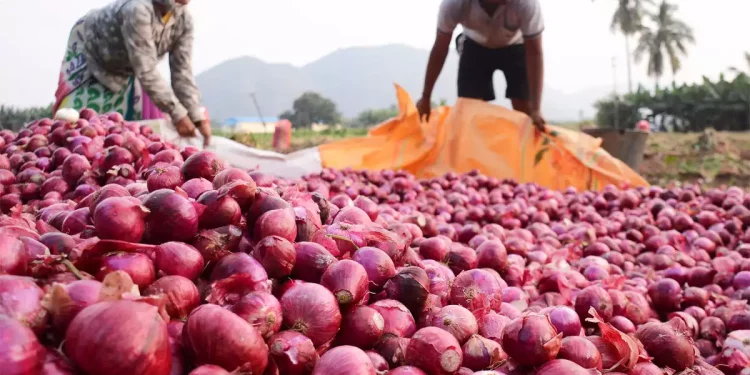Prices of onions are expected to remain elevated in the month of April despite an increase in supply harvesting which peaked in March.
- According to the Kenya National Bureau of Statistics (KNBS), the average price of one kilogram of onion in March last year was KSh 101.10 compared to KSh 167.28 in March 2024 and KSh 150.63 in February this year.
- In the agriculture sector survey commissioned by the Central Bank of Kenya in March, 60 per cent of respondents expected an increase in onion prices compared to 70 per cent of respondents sampled in February 2024 survey.
- The moderation in expected onion price increase during the March 2024 survey was partly informed by an expected increase in supply as harvest of onions peaked last month.
However, the impact of the harvest on prices was expected to be dampened by the high demand for onions both locally and within the East Africa Community (EAC) region, particularly Tanzania, Uganda, and South Sudan. Traditionally, Tanzania has been an important source of onions, complementing local supply.
CBK’s agriculture sector survey conducted from March 11 – 15, 2024 sought to obtain indicative information on recent trends and market expectations of prices and output of key agricultural commodities for the purpose of informing monetary policy.
As with previous surveys of the agriculture sector, the survey focused on gathering information on prices of key agricultural commodities in select retail and wholesale markets, agricultural output and acreage as well as output expectations from sampled farms.
The survey also sought information on factors affecting agricultural production, marketing and sale of farm produce; access to farm inputs and credit facilities as well as proposals on how to improve agricultural production.
Based on the findings of the survey, prices of potatoes and tomatoes were expected to increase in the next one month, though at a subdued pace relative to the expected increase in the February 2024 survey.
Expectations about prices of cooking oil and cooking fat point to a marginal decline in April 2024. This was informed by the observed easing of international prices of edible oils following recovery of global palm oil production and the relatively stronger Kenya shilling in March 2024.
The price of processed and unprocessed milk is expected to remain stable, supported by increased pasture resulting from favourable rainfall. Price expectations for vegetable items including kales/sukuma wiki, cabbages, spinach, and traditional vegetables in the March 2024 survey were not significantly different from the February 2024 survey. The weather conditions have been favourable for growing of fresh vegetables.
Access to Government Subsidized Fertilizer
The proportion of respondents who reported to have accessed government subsidized fertilizer increased substantially to 67 percent in March 2024, from 53 percent in January 2024 survey. The lower percentage in January 2024 mostly reflected seasonal patterns as there are minimal farming activities in January. The proportion of respondents who reported to have accessed the subsidized fertilizer in March 2024 was noted to be close to that recorded in September 2023 survey, which stood at 69 percent, as farmers prepared to take advantage of the October-December 2023 rain season.
As in previous surveys, the reasons given for not being able to get the subsidised fertiliser included lack of information on availability of the subsidized fertilizer, challenges around the logistics of access, and demand outstripping supply.
In other instances, priority was given to farmers who were members of a farming group, making it difficult for those who did not belong to any farming group to benefit from the subsidised fertiliser.
“There were also instances where farmers indicated they were notified through their mobile phones to go to the nearest National Cereals and Produce Board (NCPB) depot to get the fertiliser, but they did not have the means to travel,” notes Central Bank of Kenya in the report.
Based on the findings of the survey, CBK wants the government to address the high fuel prices which have a direct impact on both the cost of inputs and prices of agricultural commodities, continue to subsidise inputs and enhance agricultural extension services, intensify the supply of rain harvesting and storage equipment as well as construction of dams, boreholes, and water pans, and deepen access to affordable credit facilities.
See Also:




